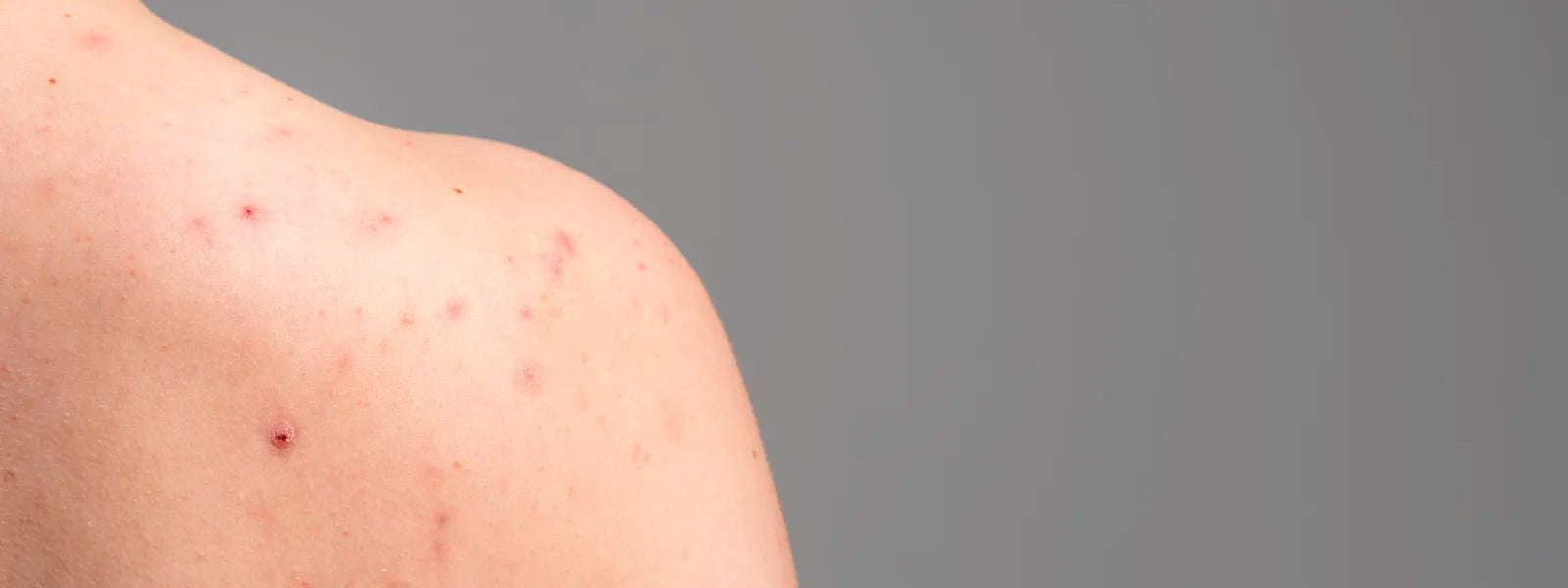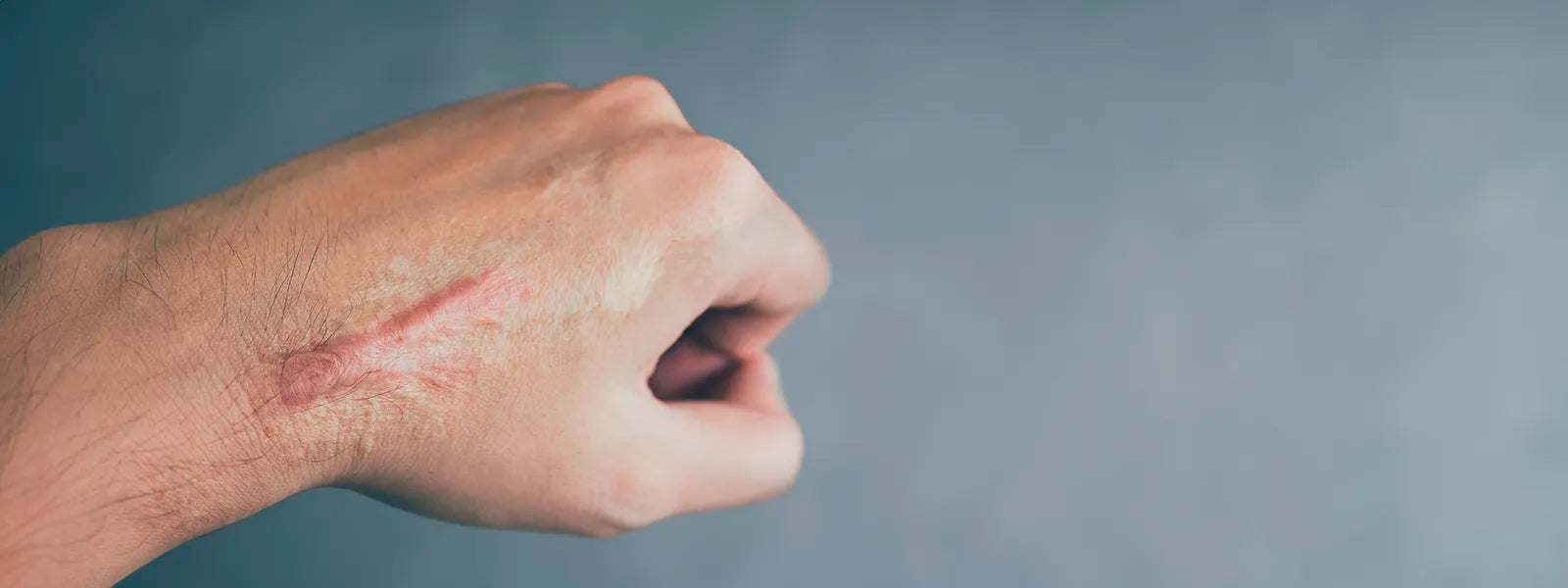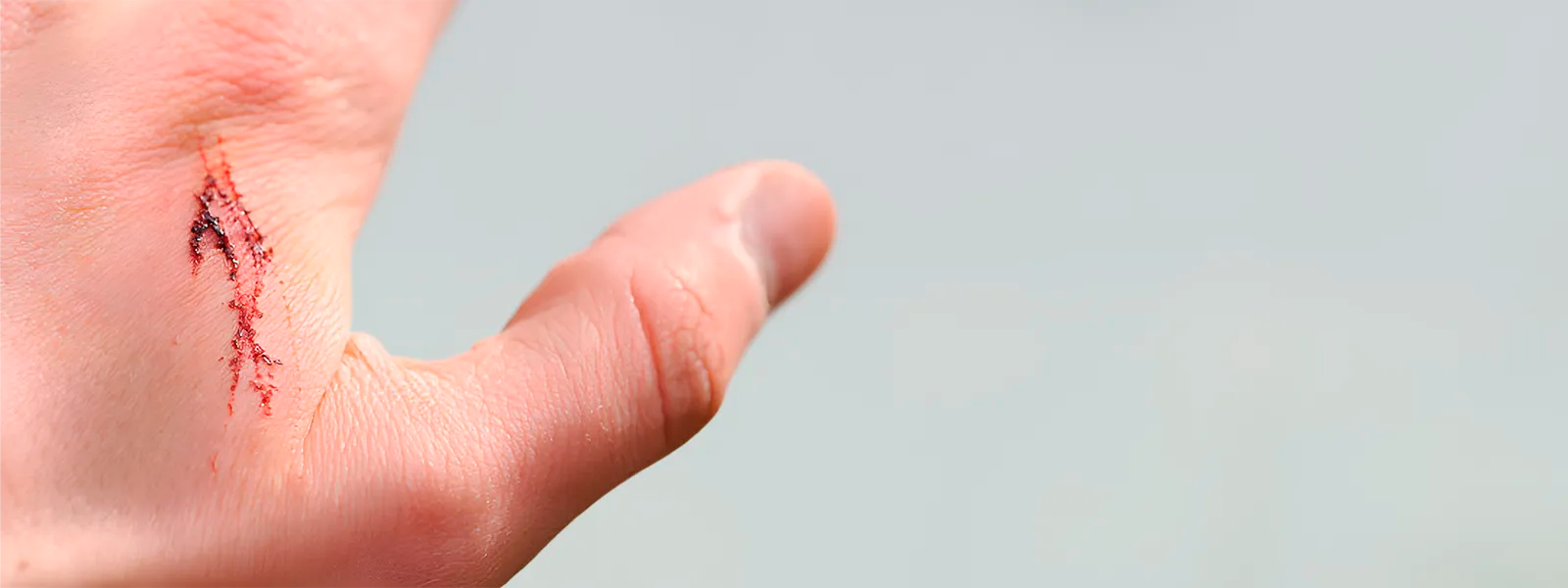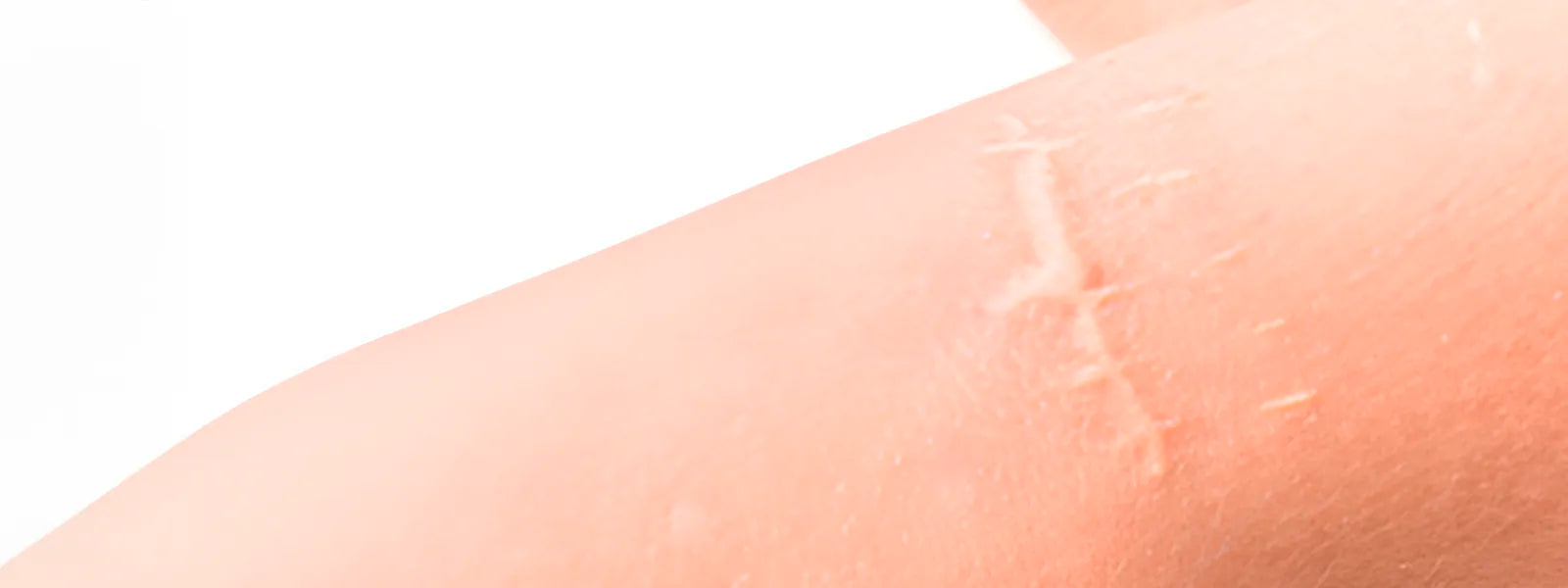Scars are a common occurrence in the human body, with an estimated 80% of individuals having at least one scar. A scar is a mark left on the skin after a wound or injury. Scars can form on any part of the body and they are a natural part of the wound healing process. In some ways, scars serve as a visible reminder of the body's ability to repair itself. Accidents, disease, piercing and skin conditions can all cause scarring. However, for many people, scars can be a source of insecurity or discomfort.
How Scars Form
Scarring occurs when the dermis is damaged. When the skin’s surface is damaged, dermal fibroblasts in the surrounding area are activated and they migrate to the newly formed wound tissue (granulation tissue) where they produce collagen to shrink the wound and replace the skin. Wound contraction brings the edges together and fibroblast remodeling replaces granulation tissue with mature collagen. It is during this phase where scars form.
The body forms new collagen fibers to mend the damage. This collagen forms scar tissue which is often of a different texture and quality than the texture and quality of our skin causing a scar to form. The collagen helps to close the wound and create a new layer of skin, but the process can leave behind a scar. Because the body prioritizes healing quickly, this collagen is often of a different texture and quality from the texture and quality of our normal skin. The severity of the scar depends on various factors such as the size and depth of the wound, the individual's age, and their genetics.
While it's not possible to completely prevent scar formation, there are steps that can be taken to minimize their appearance including proper wound care and a consistent skin care routine. Keeping the wound clean and properly dressed can help to reduce the risk of infection, which can lead to scarring. Furthermore, avoiding picking at scabs and following the recommended aftercare instructions for any injury or surgery can also help to minimize scarring.
Different Scar Types
There are several different types of scars, each with unique characteristics and causes. The most common types of scars include fine line scars, hypertrophic scars, keloid scars, pitted scars, stretch marks and scar contractures.
Fine line scars are the most common type of scars. These appear after wounds as a thin, raised line that gradually fades and flattens over time. The process can take over a year. They are usually not painful though some are itchy for the first couple months.
Hypertrophic scars are the result of excess collagen being produced at the wound site. This leaves a raised scar that does not expand beyond the original wound. Hypertrophic scars can thicken for 6 months before improving. They tend to be a result of trauma, burns or surgery. They tend to be found in areas under tension like the shoulders, neck, knees, lower abdomen, presternum and ankles.
Like hypertrophic scars, keloid scars are also the result of excess collagen production. However keloids often grow beyond the site of the original scar. They are caused by excessive collagen production during the healing process. Keloids can keep growing even after the scar is healed. They can be pink, red or the color of the skin and are often itchy or painful. Additionally one side effect of keloids is if they are near a joint they can restrict movement.
Pitted or sunken scars (also known as acne scars or ice-pick scars) have a sunken appearance and are the result of injury or loss of underlying fat in the skin.They are most often the result of skin conditions like acne or chicken pox.
Scar contractures are scars caused by burns which cause the skin to shrink. These can cause issues with movement since the area of skin around the contracture is drawn tight.
Stretch marks form when the skin stretches or shrinks too quickly. The abruptness of the change causes the elastin and collagen to rupture, creating a scar. Stretch marks are most often caused by growth spurts, pregnancy, rapid weight gain or loss and weight training.
Scar Treatment Options
There are various scar treatment options available, including topical creams, dermabrasion cryotherapy, silicone sheets, laser treatment and injectable fillers. Laser treatment and surgical revision can also be effective in certain cases. A study found that silicone gel sheeting, when used for at least 12 weeks, can improve the appearance of hypertrophic scars and keloids. Similarly, another study found that a combination of topical silicone gel and pressure therapy can significantly improve the appearance of burn scars. While each of these treatments can help repair the appearance of scars, no solution can make scars completely disappear. According to the American Academy of Dermatology, many scars will fade on their own, however acne scars sometimes worsen with age and keloids do not tend to fade.
Conclusion
Scars are a common occurrence in the human body, with an estimated 80% of individuals having at least one scar. They form when the body produces collagen to repair damaged skin tissue and can vary in size, shape, and color. Factors such as genetics, ethnicity and age can affect the appearance of a scar. While it's not possible to completely prevent scars, there are steps that can be taken to minimize their appearance. There are several different types of scars, including keloid, contracture, and atrophic scars, each with unique characteristics and causes. It is essential for individuals who are concerned about their scars to consult with a healthcare provider or dermatologist for personalized advice and treatment options.
References:
Scars | NHSScars: Overview | AAD
Scars | John Hopkins Medicine
Scars | Cleveland Clinic





Leave a comment (all fields required)